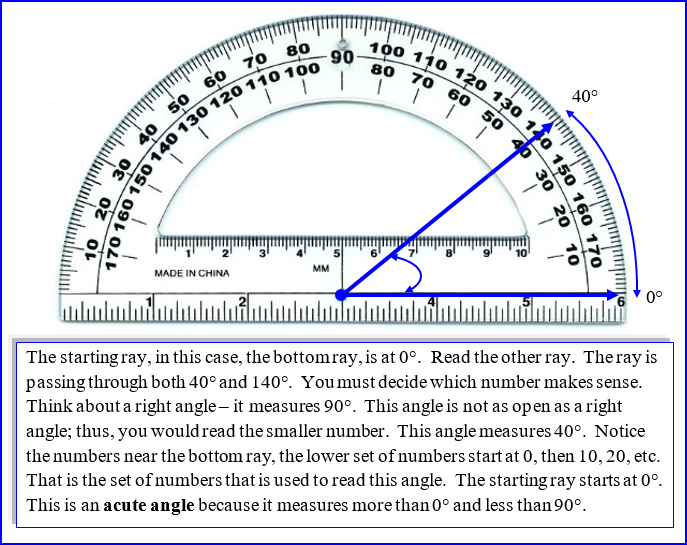
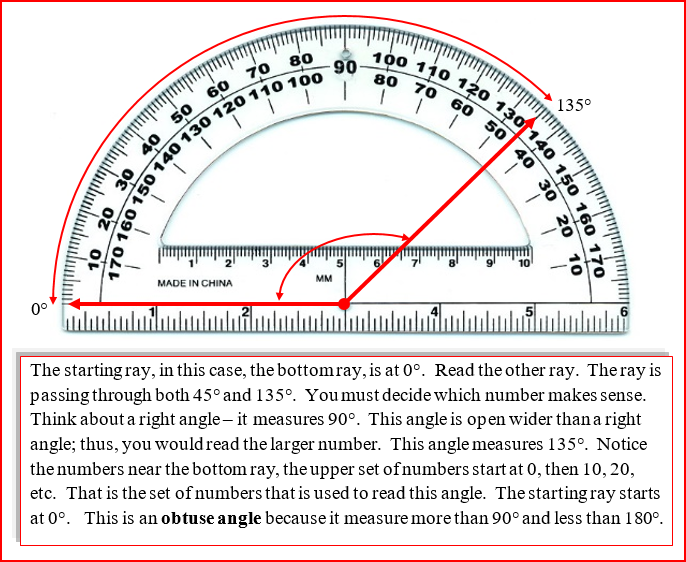
MEASURING AND IDENTIFYING ANGLES
To measure angles, we use a protractor which is divided into 180 units to represent 180 degrees. The protractor has two sets of numbers so that the angle may be measured from either the right or left, depending on which way the starting ray is pointing. If the starting ray is pointing to the left, read the top numbers, or if it is pointing to the right, read the bottom numbers.
Two types of angles are acute and obtuse. Acute angles measure less than 90 degrees. Obtuse angles measure more than 90 degrees and less than 180 degrees. Two special angles are the right angle, which measures exactly 90 degrees, and the straight angle which measures exactly 180 degrees.
We will measure and identify angles with a protractor. Benchmark angles will help in measuring angles. The angles serve as a guide in deciding if the measurement is reasonable.
PROPERTIES OF TRIANGLES
Triangles can be named by the size of the three angles formed at the vertices (corners) of the triangle. When classifying triangles by angles, triangles may be identified as acute, obtuse, or right triangles.
The three angles in a triangle share a special connection. The sum of the angles of a triangle adds up to 180 degrees. We will check this property and discover how and why it applies to all triangles.
Another way to identify types of triangles is classify triangles by the length of their sides. In this type of classification, triangles may be identified as scalene, isosceles, or equilateral.
  |
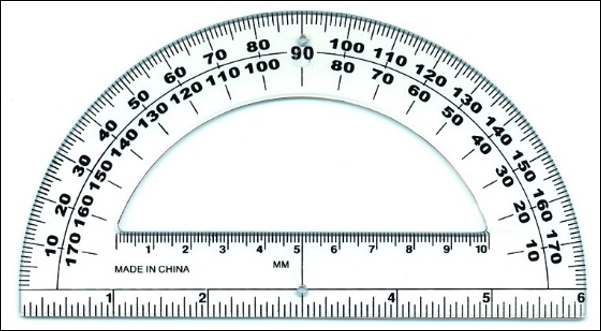 |
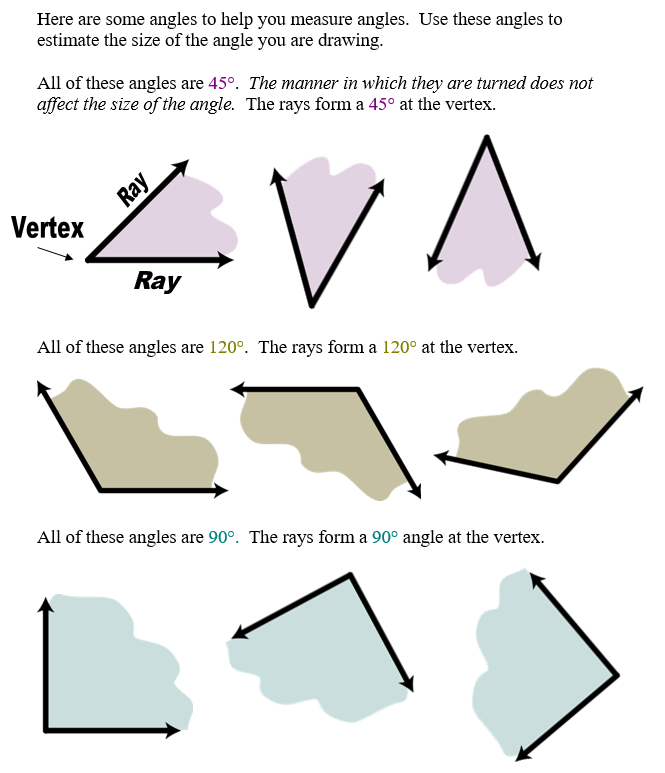 |
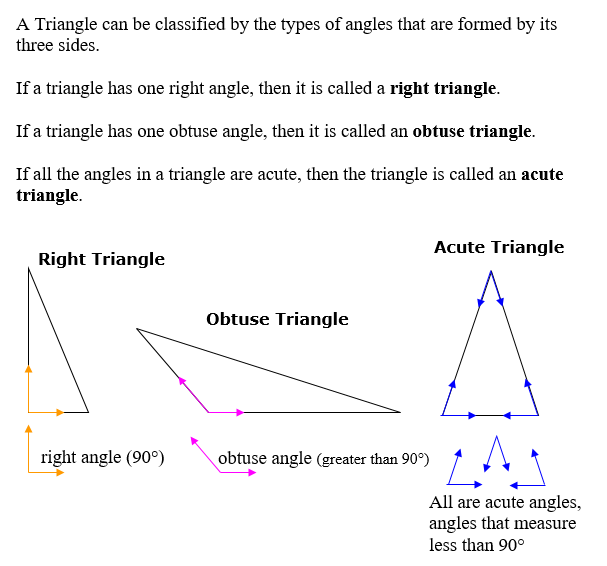 |
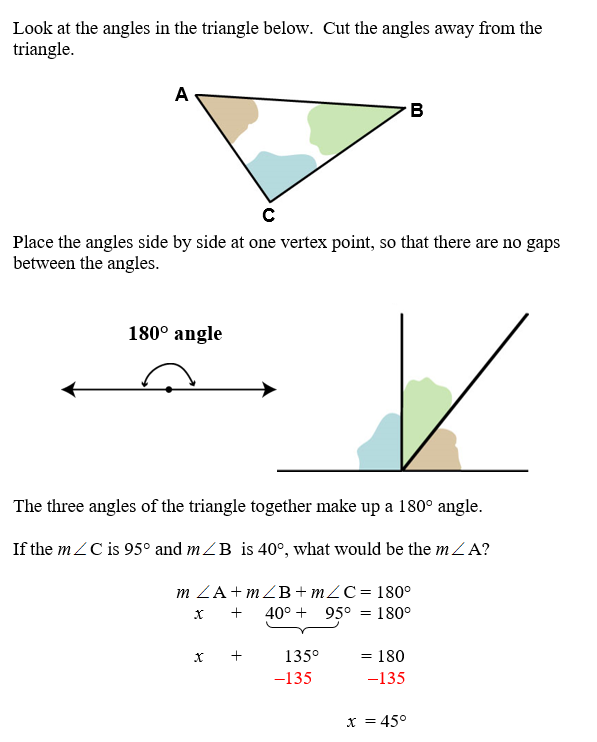 |
Classifying Triangles by Sides
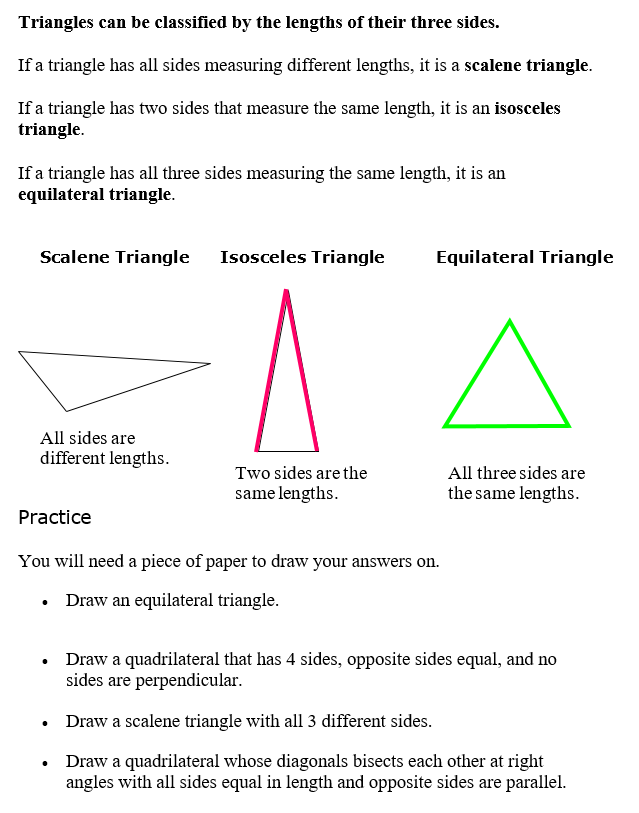 |
 |
| Measuring Angles |
| Identifying Triangles |